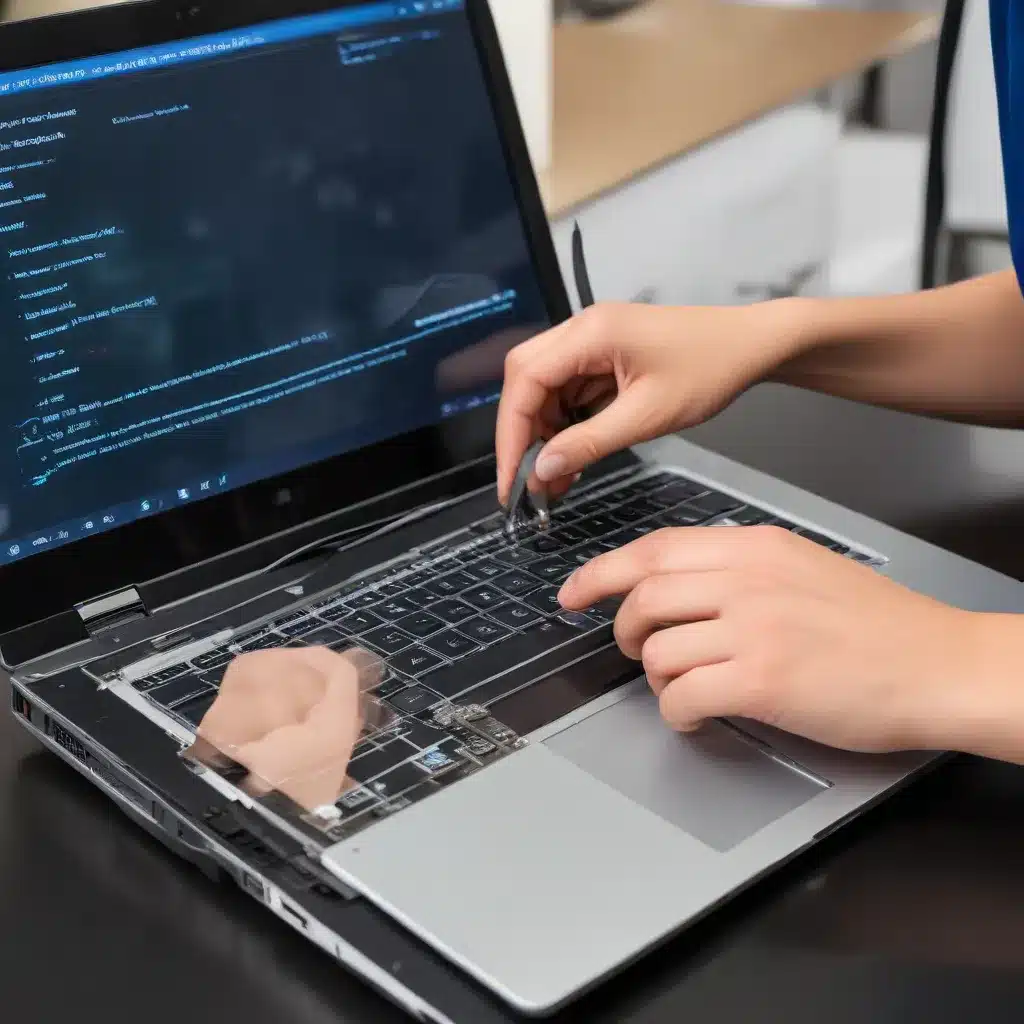
Understanding Touchscreen Digitizer Calibration
As an experienced IT professional, I’ve seen many cases where laptop touchscreens become unresponsive or inaccurate over time. This can be a frustrating issue for users who rely on the touchscreen functionality for their daily tasks. The culprit behind these problems is often the touchscreen digitizer – the component responsible for translating touch inputs into digital signals that the laptop can interpret.
Over time, various factors can cause the digitizer’s calibration to drift, leading to inconsistent or erratic touch responses. Environmental conditions, physical impacts, or even software updates can all contribute to this problem. Fortunately, there are several steps you can take to recalibrate the touchscreen digitizer and restore accurate touch response on your laptop.
Identifying Touchscreen Digitizer Issues
Before diving into the recalibration process, it’s important to understand the common symptoms of a miscalibrated touchscreen digitizer. These may include:
- Inaccurate touch registration: The cursor or touch input doesn’t align with the actual point of contact on the screen.
- Unresponsive or intermittent touch: The touchscreen fails to register touches or responds sporadically.
- Erratic scrolling or gesture recognition: Scrolling, pinch-to-zoom, or other gestures don’t work as expected.
- Unexpected touch events: The touchscreen registers phantom touches or responds to unintended input.
If you’re experiencing any of these issues, it’s likely that your laptop’s touchscreen digitizer requires recalibration.
Step-by-Step Touchscreen Digitizer Recalibration
Recalibrating the touchscreen digitizer is a straightforward process that can often resolve the issue without the need for expensive repairs or component replacements. Here’s a step-by-step guide to help you get started:
1. Check for Software Updates
Before attempting any hardware-level fixes, it’s always a good idea to ensure that your laptop’s operating system and drivers are up-to-date. Outdated software can sometimes lead to touchscreen calibration issues, so updating to the latest version may resolve the problem.
2. Perform a Windows Touch Calibration
Windows 10 and Windows 11 both include a built-in touch calibration tool that can help you adjust the digitizer settings. Here’s how to access and use it:
- Search for “Calibrate the screen for pen or touch input” in the Windows search bar and open the tool.
- Follow the on-screen instructions to calibrate the touchscreen by tracing a series of dots or lines with your finger.
- Once the calibration is complete, test the touchscreen to ensure accurate input registration.
If the Windows touch calibration tool doesn’t resolve the issue, proceed to the next step.
3. Perform a Hardware-Level Recalibration
In some cases, the touchscreen digitizer may require a more thorough, hardware-level recalibration. This process typically involves accessing the laptop’s BIOS or UEFI settings and adjusting the digitizer-specific parameters. Here’s how to do it:
- Restart your laptop and enter the BIOS or UEFI setup menu. The exact method for accessing this varies by manufacturer, but you usually need to press a specific key (such as F2, F12, or Delete) during the boot process.
- Navigate to the “Input” or “Touchscreen” section of the BIOS/UEFI settings.
- Look for options related to touchscreen calibration, digitizer sensitivity, or input tracking. The specific settings may vary, but you’re typically looking for something like “Touchscreen Calibration” or “Digitizer Settings.”
- Adjust the calibration settings as per the on-screen instructions or manufacturer’s recommendations. This may involve tracing a calibration pattern on the screen or manually adjusting values.
- Save the changes and exit the BIOS/UEFI setup. Your laptop should now boot with the updated touchscreen digitizer calibration.
4. Reset the Touchscreen Drivers
If the BIOS/UEFI calibration doesn’t work, you can try resetting the touchscreen drivers. This process will reinstall the drivers and potentially resolve any underlying software-related issues. Here’s how to do it:
- Open the Device Manager by searching for it in the Windows search bar or right-clicking the Start menu and selecting “Device Manager.”
- Locate the “Human Interface Devices” section and expand it.
- Right-click on the entry for your touchscreen device (often labeled as “HID-compliant touch screen” or something similar) and select “Uninstall device.”
- Confirm the uninstallation and restart your laptop. Windows will automatically reinstall the touchscreen drivers upon reboot.
After the drivers have been reinstalled, test the touchscreen functionality to see if the issue has been resolved.
5. Try a Factory Reset (as a Last Resort)
If none of the above steps have worked, you may need to perform a factory reset on your laptop. This will restore the device to its original, out-of-the-box state, potentially resolving any underlying hardware or software issues that were causing the touchscreen digitizer problem.
Before proceeding with a factory reset, be sure to back up any important data, as this process will erase all user files and settings. Consult your laptop’s user manual or manufacturer’s support resources for the specific steps to perform a factory reset.
Preventing Future Touchscreen Digitizer Issues
To help maintain the accuracy and responsiveness of your laptop’s touchscreen, consider the following tips:
- Use a protective screen cover or case: This can help prevent physical impacts and environmental factors that could affect the digitizer’s calibration.
- Regularly clean the touchscreen: Dust and debris can interfere with the digitizer’s sensitivity, so gently clean the screen with a microfiber cloth.
- Avoid excessive force or pressure on the screen: Applying too much pressure can cause the digitizer’s calibration to shift over time.
- Keep your laptop’s software up-to-date: Regular software and driver updates may include fixes or optimizations for the touchscreen digitizer.
By following these guidelines and being proactive about touchscreen digitizer maintenance, you can help ensure that your laptop’s touchscreen remains accurate and responsive for years to come.
Remember, if you encounter any persistent issues with your laptop’s touchscreen, don’t hesitate to seek assistance from the IT Fix blog or a qualified IT professional. We’re here to help you get the most out of your technology.












